Korean rice cake, known as tteok, is a chewy and versatile delight central to Korean cuisine, made primarily from rice flour with a unique texture that ranges from soft and chewy to crisp.
They come in various shapes and flavors, making them a staple in both savory dishes like tteokbokki and sweet treats like injeolmi.
There’s a whole world of tteok to explore, as their versatility allows them to be used in countless ways—whether in snacks, desserts, or main dishes. Whether you’ve tried them before or are new to these delicious rice cakes, learning more about tteok can enhance your appreciation of Korean food.
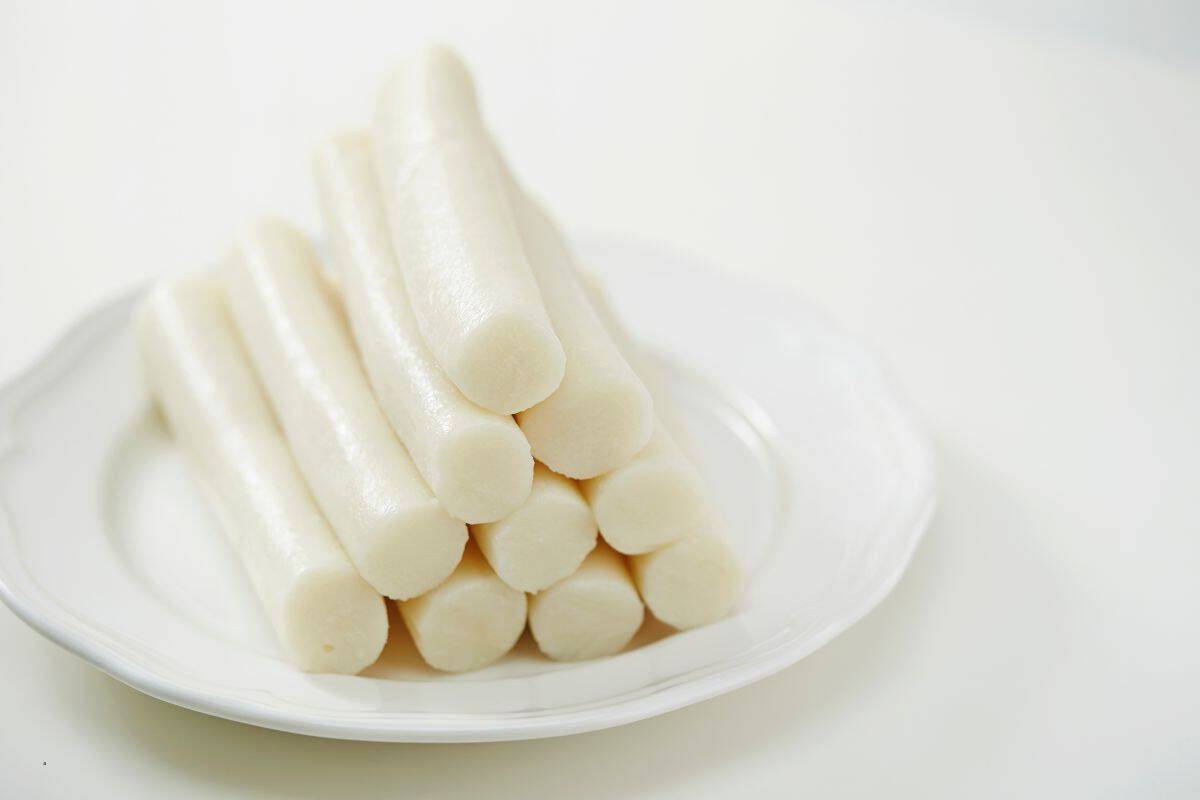
Jump to:
🍽️ The Basics of Tteok
Tteok: Korean Rice Cakes
Tteok are traditional Korean rice cakes known for their chewy texture, and they come in various forms, shapes, and flavors. These rice cakes can be steamed, pounded, or pan-fried, offering versatility in preparation and taste.
They're often made with rice flour, which can be glutinous or non-glutinous, and the method of preparation greatly affects the texture and taste of tteok, making each type unique.
Types of Tteok
There are numerous types of tteok, each with its own distinct characteristics. Garaetteok, long cylindrical rice cakes, are commonly used in tteokbokki, a popular spicy dish, while Songpyeon, crescent-shaped rice cakes, are traditionally made during Chuseok, the Korean harvest festival.
Injeolmi, covered in powdered beans or nuts, and baekseolgi, plain white rice cakes, showcase the incredible variety of tteok, ensuring there's a type for every occasion and taste preference.
Common Ingredients in Tteok
The primary ingredient in tteok is rice flour, which can be either glutinous or non-glutinous. Glutinous rice flour is what gives tteok its characteristic stickiness and chewiness, while non-glutinous rice flour creates a less sticky texture.
Other common ingredients include red beans, mung beans, sesame seeds, and chestnuts, often combined with sweeteners like sugar and honey, especially in dessert versions. Sometimes, natural colorings from fruits and flowers are used to make tteok more visually appealing.
Tteok in Korean Culinary Culture
Tteok holds a significant place in Korean culinary culture, as it is not just a food but also an important part of many cultural and religious events. During festivals like Chuseok and New Year’s Day, tteok is a must-have on the table.
Tteok is commonly seen at celebrations, such as birthdays and weddings, and families often make it at home as a bonding activity. For everyday meals, tteok serves as either a simple snack or a substantial addition to soups and stews.

🔪 Preparation of Tteok
Traditional Methods
Traditionally, tteok is made by pounding soaked rice with a heavy mortar and pestle, a process that creates the chewy texture essential for tteok.
The rice is soaked overnight and then steamed in a special steamer called a siru, which helps it become sticky and easy to pound. After steaming, the rice is transferred to a large stone mortar, where it is pounded with a wooden pestle until it becomes smooth and elastic.
This process, requiring strength and rhythm, is what gives tteok its unique texture.
Modern Techniques
Modern methods simplify the process by using rice flour instead of soaked rice, as pre-ground rice flour can be found in stores, eliminating the need to soak and pound the rice.
In home kitchens, rice flour is mixed with water and sometimes other ingredients like honey or sugar to add sweetness, and the mixture is then steamed.
Electric mixers and food processors can also be used to blend the mixture, further reducing the effort needed for kneading. These techniques save time while still creating delicious tteok.
Steaming vs. Pounding
Steaming and pounding are crucial steps for making tteok, but they affect the texture in different ways. Steaming locks in moisture, making the rice softer and perfect for sweet tteok, where a tender texture is desired.
On the other hand, pounding creates a chewier texture, ideal for savory dishes as pounded tteok holds its shape better and has the distinct chewiness many people love.
Shaping and Flavoring
After preparation, the tteok is shaped and flavored based on its type; the dough can be rolled into logs, flattened, or cut into small pieces. Sweeteners like honey or sugar are often added for sweetness, while sesame oil may be used for a nutty taste.
For savory tteok, ingredients like soy sauce or gochujang can be included to enhance flavor. Shaping is done by hand or with molds, forming the dough into rectangles, circles, or more complex shapes.
Cooking Fresh vs. Frozen Tteok
Fresh tteok is softer and more pliable, making it easier to cook. To prepare fresh tteok, simply boil it for 5-10 minutes until it reaches the right tenderness, preserving its chewy texture and subtle flavor.
Frozen tteok, on the other hand, requires more care. Start by thawing the rice cakes completely, then place them in boiling water and cook for about 2 minutes, stirring gently to prevent sticking.
Alternatively, pan-frying or broiling are excellent options for frozen tteok. Heat a cast iron skillet over high heat with some vegetable oil, and cook for 3-4 minutes on each side, creating a crispy exterior while keeping the inside chewy.
Hydration Strategies for Drier Varieties
Drier tteok, or those stored for longer periods, need proper hydration to regain their texture. Start by soaking the tteok in water for at least 30 minutes, which helps them rehydrate and become more pliable.
For a quicker method, place the tteok in a microwave-safe bowl with water, microwave on high for 1-2 minutes, and check for softness, repeating if necessary. This technique fast-tracks hydration without compromising texture.
When using dry tteok in soups or stews, let them simmer in the broth for 10-15 minutes to both rehydrate and absorb the flavors, resulting in a harmonious blend of taste and texture. Proper hydration is essential to ensure your tteok dishes remain chewy and delicious.
Storage Advice
Tteok can be stored in various ways depending on how soon they will be consumed. If they are to be eaten within a few days, keeping them in an airtight container at room temperature works well.
For longer storage, freeze tteok in a single layer on a baking sheet before transferring them to an airtight container or a ziplock bag, as this method prevents them from sticking together.
When ready to eat, they can be softened by steaming or microwaving with a damp paper towel. Whether it's steamed tteok or shaped tteok, proper storage helps maintain their texture and flavor. Avoid refrigerating tteok as it can make them hard and dry.
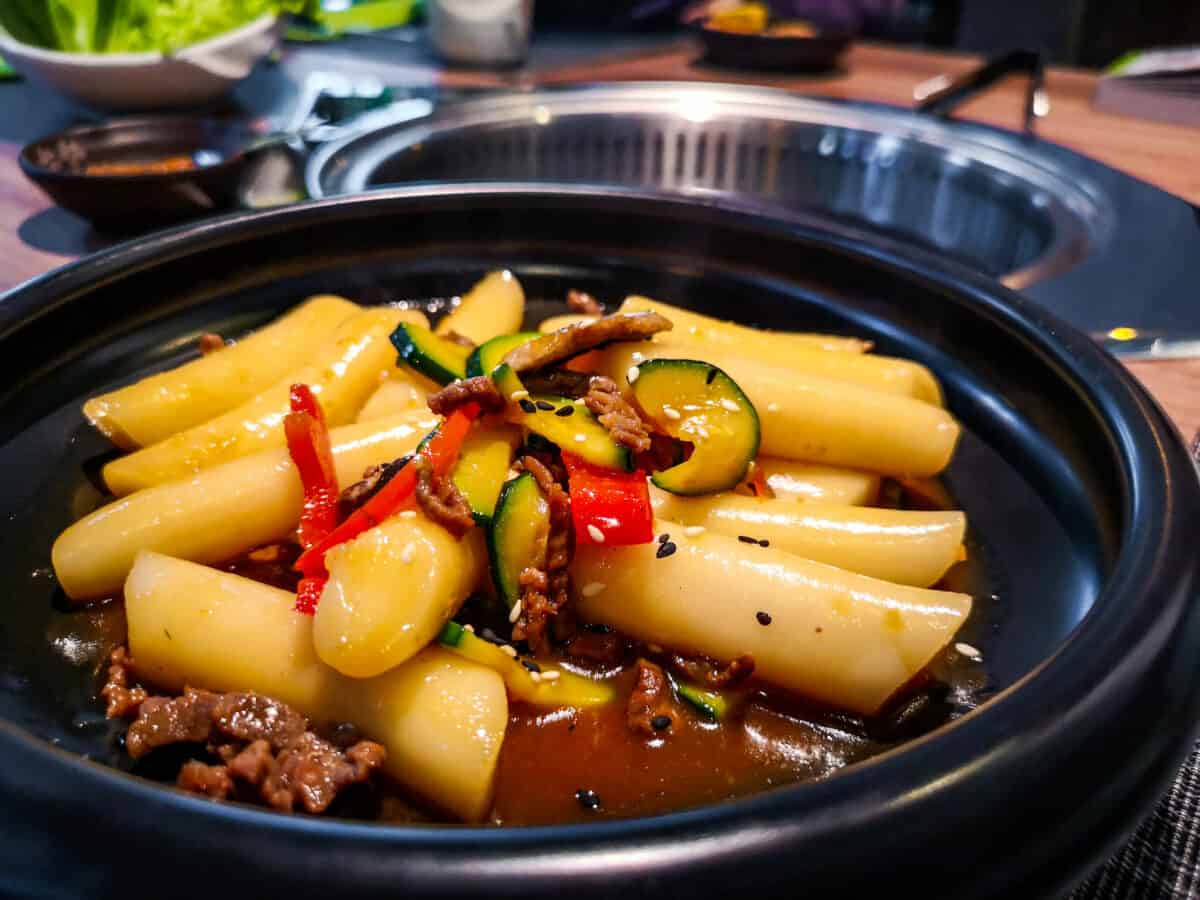
🥘 Popular Tteok Dishes
Tteokguk: Rice Cake Soup
Tteokguk is a traditional Korean soup made with sliced rice cakes called garaetteok, often enjoyed during the Lunar New Year. The softened rice cakes in this soup symbolize gaining a year of age, making it a meaningful dish for the holiday.
The main ingredients include garaetteok and beef or chicken broth, with eggs sometimes added for extra richness. Typically, the soup is seasoned with soy sauce, sesame oil, and a pinch of salt.
Garnished with seaweed and green onions, tteokguk offers a burst of flavor and color in every comforting bowl. Many families have their own recipes, making each version of this dish truly unique.
Tteokbokki: Spicy Stir-Fried Rice Cake
Tteokbokki is a popular Korean street food known for its chewy texture and spicy flavor, made with cylindrical garaetteok stir-fried in a spicy sauce of gochujang (Korean red chili paste), sugar, and soy sauce.
Often, fish cakes, boiled eggs, and green onions are added, creating a dish known for its bright red color, which can be adjusted to be less or more spicy depending on personal preference.
Loved as both a snack and a quick meal, tteokbokki pairs perfectly with a cold drink, and its sweet and spicy taste has made it a favorite among many.
😋 Diversity of Flavors & Textures
Savory vs. Sweet Tteok
Savory Tteok: These rice cakes are often used in hearty dishes like tteokbokki, a popular dish featuring a spicy sauce and a chewy texture, enhanced by ingredients such as fish cakes, scallions, and cabbage.
Sweet Tteok: Sweet versions are typically made with sugar or honey and flavored with ingredients like sesame seeds. A popular sweet tteok is yakbap, which is made with dates, chestnuts, and jujubes. Both savory and sweet varieties offer distinct textures and are enjoyed in a variety of settings.
❓ Frequently Asked Questions
To make Korean rice cakes, you'll typically need rice flour. The flour is mixed with water to form a dough. Then, the dough is steamed or pounded until it becomes chewy. Some recipes may involve additional steps like boiling.
Korean rice cakes can be found in most Asian markets. These stores often carry a variety of tteok types. Additionally, you might find them at specialty grocery stores that focus on international foods. Online retailers also offer options.
Popular Korean rice cake desserts include Injeolmi, which is coated with powdered beans, and Hwajeon, a type of sweet rice pancake with flower petals. Another favorite is Songpyeon, small rice cakes filled with sweet fillings like sesame seeds or sweet red bean paste.
The main ingredients of Korean rice cakes are rice flour and water. Depending on the type, additional ingredients might include sweeteners like sugar or honey, flavorings like sesame oil, and fillings such as beans or nuts.
Korean rice cakes are low in fat and can be a good source of energy due to their rice content. They are often made without artificial additives. However, some versions can have high sugar or carbohydrate content, so it's best to consume them in moderation.
When eating Korean rice cakes, expect a chewy and slightly sticky texture. The taste can vary from mildly sweet to savory, depending on the type and ingredients used. For instance, Tteokbokki is known for its spicy sauce, while plain tteok tends to have a subtle flavor.

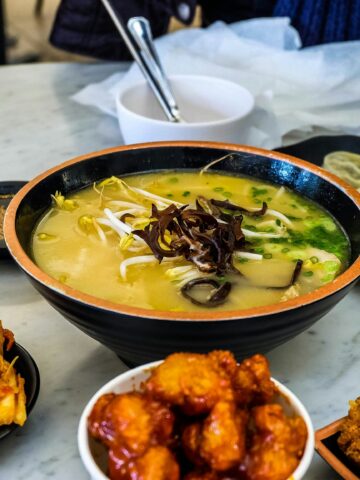
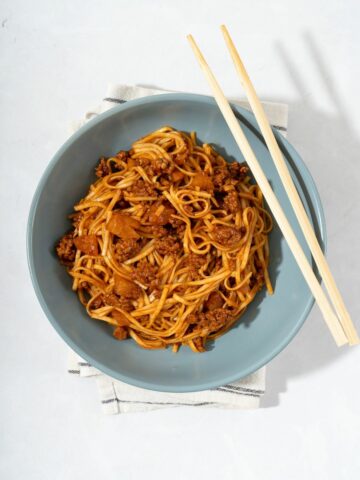
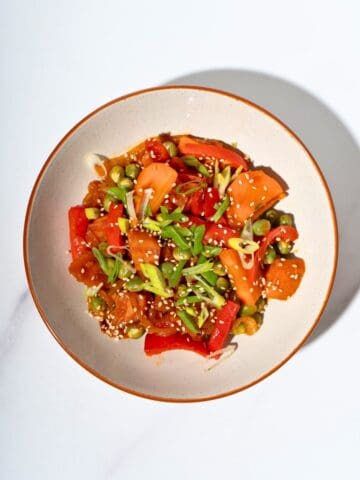
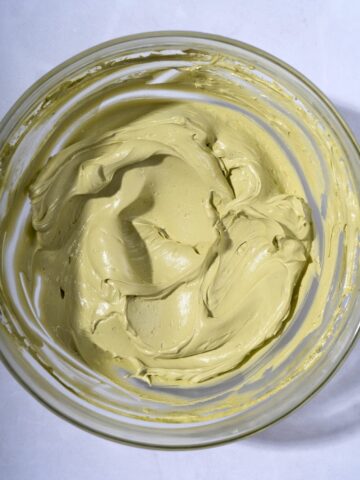
Comments
No Comments